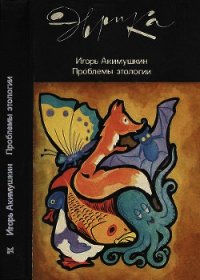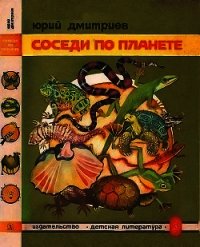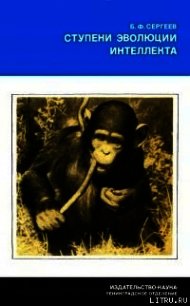Волк. Вопросы онтогенеза поведения, проблемы и метод реинтродукции - Бадридзе Ясон Константинович
Павлов М. П. Волк. М., «Лесная промышленность», 1982. 280 с.
Пажетнов В. Л. Методика выращивания медвежат сирот для выпуска в дикую природу. Тверь, изд. — во «Алексей Ушаков Со», 1999. 47 с.
Поярков А. Д. Некоторые черты поведения волка, выявленные методом тропления. В сб.: «Поведение волка». М., изд. АН СССР, 1980, с. 111–122.
Прибрам К. Г. Центральные процессы формирования образов, обработки информации и эпизодических «озарений». В кн.: Нейрофизиологические механизмы поведения. М., «Наука», 1982, с. 348–371.
Свириденко П. А. Запасание корма животными. Киев, изд. АН СССР, 1957. 155 с.
Семенов Б. Т. К биологии среднерусского волка. В сб.: Экологические основы охраны и рационального использования хищных млекопитающих (Материалы Всесоюз. совещ.). М., Наука, 1985, с. 107–121.
Симонов П. В. Неосознаваемое психическое: подсознание и сверхсознание. В сб.: Кибернетика живого. Человек в разных аспектах. М., «Наука», 1985, с. 107–121.
Слоним А. Д. Инстинкт. Л., «Наука», 1967. 160 с.
Слоним А. Д. Среда и поведение. Формирование адаптивного поведения. Л., «Наука», 1976. 209 с.
Слудский А. А. Взаимоотношения хищников и добычи (на примере антилоп и других животных и их врагов). Труды Ин-та зоологии Каз. СССР. Алма-Ата, т.17, с. 212–214.
Собанский Г., Супин Л., Марков О. Волк на Алтае. «Охота и охот. хоз-во». 1975, с. 12–14.
Судаков К. В. Биологические мотивации. М., «Медицина», 1971. 302 с.
Уждавини Э. Р. Врожденные пищевые рефлексы у щенков. В сб.: Опыт изучения регуляции физиологических функций. М. — Л., изд-во АН СССР, 1958, том 4, с. 101–111.
Уждавини Э. Р. Шепелева В. К. Очерки развития врожденного поведения. М. — Л., «Наука», 1966. 119 с.
Фабри К. Э. Основы зоопсихологии. М., Изд. МГУ, 1993.
Филимонов А. Н. Поведение казахстанского волка в различных ситуациях. В сб.: Поведение волка. М., изд-во АН СССР, 1980, с. 60–75.
Формозов А. Н. О реакции волка (Canis lupus L.) на человека. Поведение охотничьих животных. Сборник научно-технической информации. Выпуск 51–52. Киров, 1976, с. 84–85.
Хайнд Р. Поведение животных. Синтез этологии и сравнительной психологии. М., «Мир», 1975, 855с.
Шеперд Г. Нейро-биология. Т. I. М., «Мир», 1987. 451 с.
Шулейкина К. В. Системная организация пищевого поведения. М., «Наука», 1971. 267 с.
Alexander, G., Poindron, P., Le Neindre, P., Stevens, D., Levy, F., Bradley, L. Importance of the first hour post-partum for exclusive maternal bonding in sheep. Applied Animal Behaviour Science. 1986. vol. 16, no. 3, pp. 295–300.
Allen D. L. «How wolves kill,» Natural History, Vol. 88, No. 5, May 1979, pp. 46–50.
Badridze J. On the method of rehabilitation of rare and endangered animals. Newsletter (Grupo Lobo). VI, 5, 9—10, 1991, pp. 2–4.
Badridze J. Captive-raised wolves become wild in Georgia. Re-Introduction News. 1994, pp. 14–15.
Badridze J. The status of fauna in Georgia: 1995. Russian Conservation News. Moscow, 1995, October, N5, pp. 23–24.
Badridze J., Gurielidze Z. The reaction wild ungulates to predation: instinct or learned behaviour? Изд-во АН ГССР, «Мецниереба», 1997. 17 с.
Badridze J., Gurielidze Z., Todua G., Badridze N., Butkhuzi L. The reintroduction of captive-raised large mammals into their natural habitat: problems and method. Tbilisi, Institute of Zoology of the Academy of Sciences. 1992,12 p.
Beaver, B. V. Maternal Behavior in Mares. Veterinary Medicine, Small Animal Cli-nician. 1981. vol. 76, no. 3, pp. 315–317.
Berman, C. M. Rasmussen, K. L. R. Suomi, S. J. Reproductive consequences of ma-ternal care patterns during estrus among free-ranging rhesus monkeys. Behavioral Ecology amp; Sociobiology. 1993. vol. 32, no. 6, pp. 391–399.
Bomer M. The rehabilitated chimpanzees of Rubondo Island. Oryx. 1985, 19, July, pp. 151–154.
Breitenmoser U. The Eurasian Lynx: Achievements and problems in reintroduc-tions. Abstract of papers and posters, V Intern. Teriol. Congress, vol.1. Rome, 1989, p.246.
Breitenmoser U., Breitenmoser-Wursten C., Carbyn L. N., Funk S. M. In: Carnivore Conservation. Gittleman, J. L., Funk, S. M., Macdonald, D. W. amp; Wayne, R. K. (Eds). CambridgeUniversity Press, Cambridge. In press. 2001.
Brown, R. E. Murdoch, T. Murphy, P. R. Moger, W. H. Hormonal responses of male gerbils to stimuli from their mate and pups. Hormones amp; Behavior. 1995. vol. 29, no. 4, pp. 474–491.
Capitanio, J. P. Reite, M. The roles of early separation experience and prior familiar-ity in the social relations of pigtail macaques: A descriptive multivariate study. Pri-mates. 1984. vol. 25, no. 4, pp. 475–484.
Capitanio, J. P. Weissberg, M. Reite, M. Biology of maternal behavior: Recent find-ings and implications. The Psychobiology Of Attachment And Separation. 1985. pp. 51–92.
Champoux, M. Byrne, E. DeLizio, R. Suomi, S. J. Motherless mothers revisited: Rhesus maternal behavior and rearing history. Primates. 1992. vol. 33, no. 2, pp. 251–255.
Clark, M. M. Spencer, C. A. Galef, B. G., Jr. Responses to novel odors mediate mater-nal behavior and concaveation in gerbils. Physiology amp; Behavior. 1986. vol. 36, no. 5, pp. 845–851.
Coe, C. L. Psychobiology of maternal behavior in nonhuman primates. Conference on Biological and Behavioral Determinants of Parental Behavior in Mammals, 8—11 Sep 1987, Leesburg, VA (USA). Mammalian Parenting. Biochemical, Neurobio-logical, And Behavioral Determinants. 1990. pp. 157–183.
Eibl-Eibesfeldt, E. The interactions of unlearned behavior patterns and learning in mammals. In: Brain mechanisms and learning, Ed. Delafresnave I. F. Oxford: CIOMSS, 1961, p. 53–73.
Fentress J. S. Observations on the behavioral development of hand-reared male tim-ber wolf. Ам. Zoologist.1967, р. 339–351.
Fisher J. Introduction. In: The Red Book. Wildlife in Danger. London, 1969, pp. 13–24.
Fisher J., Simon N., Vincent J. The Red Book. Wildlife in Danger. London, 1969, 478p.
Fleming, A. S. Sarker, J. Experience-hormone interactions and maternal behavior in rats. Physiology amp; Behavior. 1990. vol. 47, no. 6, pp. 1165–1173.
Frankova, S. Influence of Early Social Environment on Behavioural Development and on Later Maternal Behaviour of Protein Deprived Rats. Activitas Nervosa Supe-rior. 1981. vol. 23, no. 2, pp. 81–91.
Fox M. W. «The ontogeny of behavior and neurologic responses in dog». Anim. Behav. 1964, v.12, N 3, pp. 301–310.
Fox, M. W. «Ontogeny of prey-killing behavior in Canidae». In: Behaviour. Vol.35:3–4, 1969, pp. 259–272.
Fox, M. W. Behaviour of wolves, dogs and related Canids. Jonathan Cape, Thirty Bedford Square, London. 1971, 214p.
Frijlink, J. H. «Patterns of wolf pack movements prior to kills as read from tracks in Algonquin provincial Park, Ontario, Canada» in Bijdr. Dierk., Vol. 47:1, 1977, pp. 131–137.
Gonzalez, D. E. Deis, R. P. The capacity to develop maternal behavior is en-hanced during aging in rats. Neurobiology of Aging. 1990. vol. 11, no. 3, pp. 237–241.
Groos K. The Play of Animals, D. Appleton and Co., New York. 1898.
Harlow H. F. Zimmerman R. R. Affectional responses in the infant monkey. «Sci-ence». 1959. v. 130, N 3373, pp. 421–432.
Hanshaw R. E., Lockwod R., Shideler R., Stephenson R. Experimental release of captive wolves. In: The behavior and ecology of wolves. Ed. E. Klinghamer. Gar-land STPM Press. N. — Y. — L. 1979, pp. 3—18.
Hector, A. C. K. Seyfarth, R. M. Raleigh, M. J. Male parental care, female choice and the effect of an audience in vervet monkeys. Animal Behaviour. 1989. vol. 38, no. 2, pp. 262–271.
Hnida, J. A. Mother-infant and infant-infant interactions in captive sable ante-lope: Evidence for behavioral plasticity in a hider species. Zoo Biology. 1985. vol. 4, no. 4, pp. 339–349.
Howard P. The experimental release of captive-bred cheetah (Acinonyx jubatus) into the natural environment. Worldwide Furbearer Conf., Frostburg, Md. Aug. 3—11, 1980. Proc. Vol.2. S. L., 1981, pp. 1001–1026.




